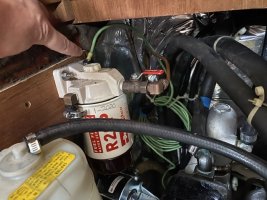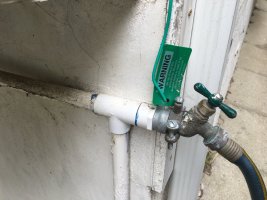Seeking assistance:
Several of the Raymarine electronic gadgets I am installing have 3 wires, positive, negative, and RF drain which is a ground wire.
I do not believe I have a grounding plate in the bottom of my boat. In contact with my propellor shaft I found a metal lever attached to a green wire (green wire associated with grounding, I presume)

The other end of this wire is coiled and taped and in my engine compartment, terminated at a bolt holding my Racor primary filter to the compartment wall.

1. Does it make sense that this wire is more or less insulated from the rest of the boat? Is it preventing electrolysis or keeping me or the boat safe? Is it just wired incorrectly?
2. Would connecting the Raymarine RF ground lines to this wire be the right thing to do? It does seem like it would be a good ground assuming the contact between the metal lever and the prop shaft is clean. If so, should I shorten that long coil of wire? The Raymarine manuals highlight the importance of the ground wire being large diameter and short length.
Thank you in advance for suggestions.
Several of the Raymarine electronic gadgets I am installing have 3 wires, positive, negative, and RF drain which is a ground wire.
I do not believe I have a grounding plate in the bottom of my boat. In contact with my propellor shaft I found a metal lever attached to a green wire (green wire associated with grounding, I presume)

The other end of this wire is coiled and taped and in my engine compartment, terminated at a bolt holding my Racor primary filter to the compartment wall.

1. Does it make sense that this wire is more or less insulated from the rest of the boat? Is it preventing electrolysis or keeping me or the boat safe? Is it just wired incorrectly?
2. Would connecting the Raymarine RF ground lines to this wire be the right thing to do? It does seem like it would be a good ground assuming the contact between the metal lever and the prop shaft is clean. If so, should I shorten that long coil of wire? The Raymarine manuals highlight the importance of the ground wire being large diameter and short length.
Thank you in advance for suggestions.





